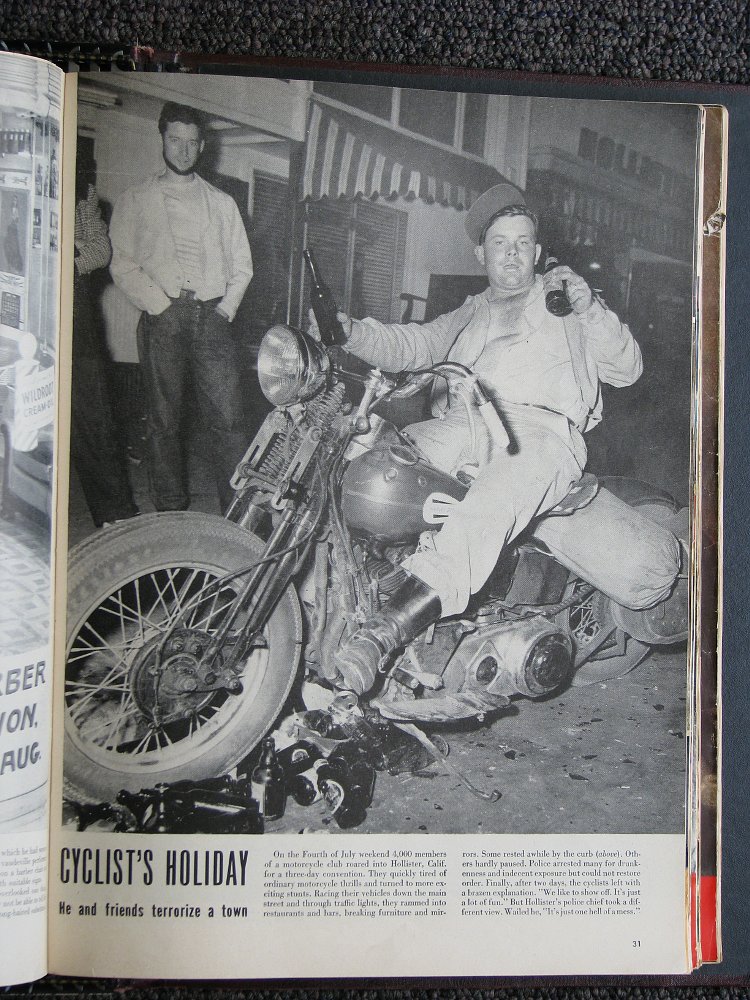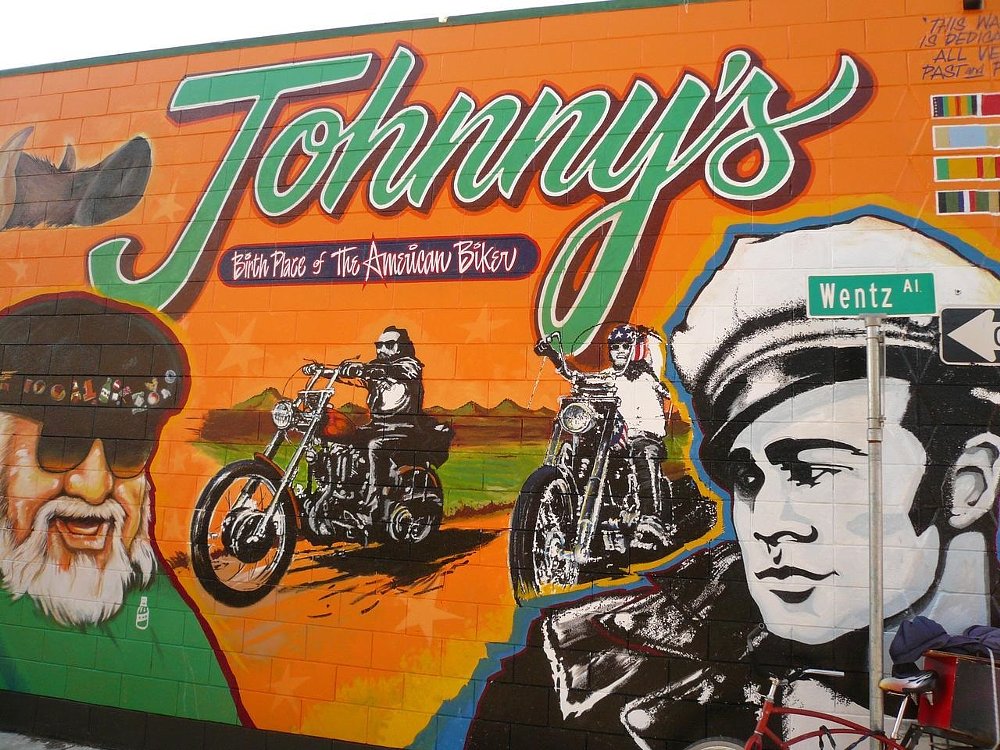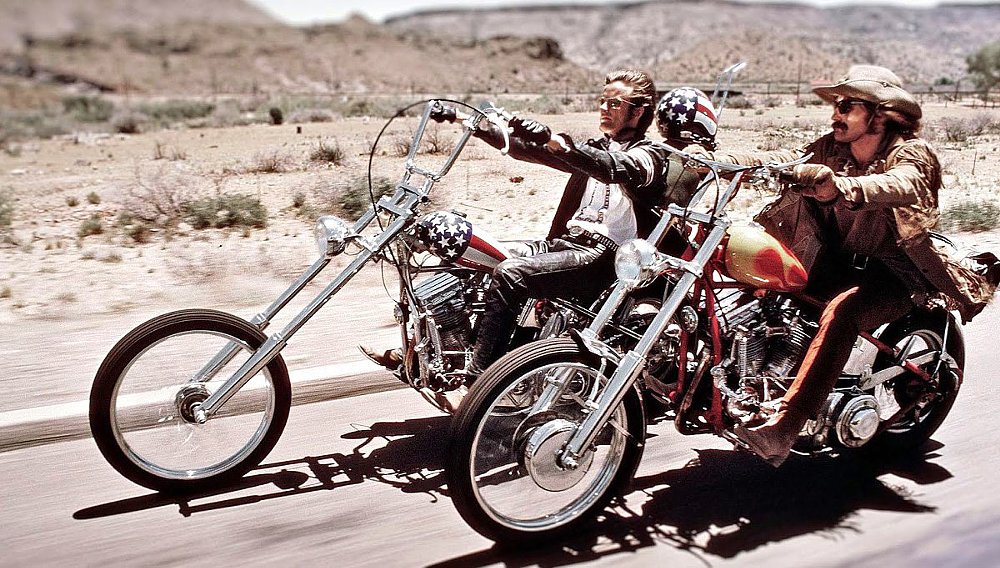When the July 21, 1947, issue of Life magazine hit the newsstands and arrived at subscribers' homes, the American public probably hadn't thought much about motorcyclists. Some of them might have heard of Cannon Ball Baker, or had a neighbor who rode one of those big Harley-Davidsons, but otherwise their mental picture of a biker was either blurry or non-existent. But in that issue of Life, on page 31, was a photo that changed the popular perception of bikers into something very real — and not at all good.
On that page was single, stark image of an obviously drunk man teetering in the saddle of a Harley surrounded by empty beer bottles. Under it was the following caption:
"On the Fourth of July weekend 4,000 members of a motorcycle club roared into Hollister, California, for a three-day convention. They quickly tired of ordinary motorcycle thrills and turned to more exciting stunts. Racing their vehicles down the main street and through traffic lights, they rammed into restaurants and bars, breaking furniture and mirrors. Some rested by the curb. Others hardly paused. Police arrested many for drunkenness and indecent exposure but could not restore order. Finally, after two days, the cyclists left with a brazen explanation. 'We like to show off. It's just a lot of fun.' But Hollister's police chief took a different view. Wailed he, 'It's just one hell of a mess.'"
Even now, 75 years later, some motorcyclists blame the events in Hollister and the publication of that iconic photo for the rise of the bad-boy-biker stereotype that has plagued riders ever since. Claims that the press exaggerated the violence, and that the photo was staged, have done little to repair the damage done to the sport's reputation. But is there any foundation to those claims?

A deeper look into what happened in Hollister 75 years ago
In 1994, I wrote a piece about the American Motorcyclist Association Gypsy Tour, as the event was officially known, for American Rider magazine, which has long since gone to that big newsstand in the sky. I found microfilm copies of the Hollister Free Lance, the local newspaper, which had firsthand coverage of the events of the weekend.
According to the Free Lance, on the evening of Thursday, July 3, 1947, motorcyclists began arriving in Hollister for the annual Gypsy Tour, a three-day carnival of races and field events planned for the Fourth of July weekend. By the next day, their numbers had swollen beyond expectations. AMA officials said they had registered 1,500 riders and that at least that many more had arrived but not registered. Later estimates of the number of riders in the town of 4,900 varied, but the most frequently quoted figure was 4,000.
By Saturday night, the celebration began spilling over into the streets. The local hospital was jammed with injured bikers, and the police arrested so many revelers for a variety of offenses that a special session of night court was convened.
About 30 California Highway Patrol officers armed with tear-gas guns were called in to supplement the overmatched Hollister police force. Two blocks of the main drag, San Benito Avenue, were cordoned off and all but ceded to the motorcyclists. A band was summoned to play for them, and they danced amid discarded beer bottles.
By Sunday, with the county jail bulging with hung-over lawbreakers, the party began to run out of steam. The last of the motorcyclists left after Monday's races, and life returned to something like normal in Hollister.
The primary source of information about that weekend was the Free Lance, whose reporters were first on the scene. Those reporters also fielded telephone calls from newspapers all across the country as word of the event spread. To check the claims that the national press exaggerated the events of that weekend I ordered microfilm back issues of prominent national newspapers such as the San Francisco Chronicle, the Los Angeles Times, the Chicago Daily Tribune, and The New York Times. Not surprisingly, the farther the paper was from Hollister, the more perfunctory its accounts were.
In contrast to the multiday coverage in the Free Lance and the Chronicle, the Chicago Daily Tribune gave a total of 67 lines of copy to the story, the Los Angeles Times 60, and The New York Times a mere 43, and none ran photos. The Free Lance's account was, for the most part, accurately retold, not grossly exaggerated, in subsequent press reports.
Hollister locals disagreed on the severity of the "invasion." Some condemned the bikers, while others, comparing it to the annual rodeo in nearby Salinas, dismissed the Gypsy Tour as "noisy, often annoying, but… damage free."
Then came Life. At the time, the magazine had a broad national reach no magazine could have today, and it put the Gypsy Tour on the national news stage. The photo of the drunk was one of two that appeared in the Chronicle on Monday, July 7, and was taken in Hollister the previous Friday night by Chronicle photographer Barney Peterson. With the click of a shutter, motorcycling's image began to change.
Authenticating the photo was complicated by the fact that Peterson had died a few years before I talked to some of his former colleagues at the Chronicle. Those colleagues defended him.
"Barney was not the type to fake a picture," recalled Jerry Telfer, a photo assignment editor who knew Peterson. "Barney was the kind of fellow who had a very keen sense of ethics, pictorial ethics as well as word ethics."

Next I placed ads in newspapers in several towns adjacent to Hollister asking for information on the biker in the photo. I got a response from Hollister historian Daniel Corral, who told me he knew the identity of the man in the photo standing on the sidewalk behind the biker. That man's name was Gus De Serpa, and he still lived in Hollister. What's more, Corral said, De Serpa claimed to have watched Barney Peterson stage the photo. I headed for Hollister where Gus invited me to his home to tell me what he'd seen that night.
De Serpa was working as a movie projectionist in the Granada Theatre on the night of Friday, July 4, and after his shift ended at 11 p.m. he walked over to San Benito Avenue to take in the spectacle the whole town was talking about.
"We went uptown, my former wife and I," recalled De Serpa, "to see all the excitement, and we ran into these people. They were on the sidewalk and there was a photographer. They started to scrape up the bottles with their feet, you know, from one side to another, and then they took the motorcycle and picked it up and set it right in the glass."
Of the man on the motorcycle, De Serpa said, "That’s not his motorcycle, I can tell you that. He was just in the vicinity, and he was pretty well loaded. There was a bar right there, Johnny's Bar. I think he came wandering out of that bar, and they just got him to sit down there. I told my wife, 'That's not right; they shouldn't be doing that. Let's stand behind them so they won't take the picture.' I figured if I was behind them they wouldn't take it. But he took a picture anyhow, this fellow did, he didn't care. And then after that, everybody went on about their business."
In 2011, I received one last response to my inquiries about the identity of the drunk on the bike in the form of a comment on my old blog left by "Garry E" from Clovis, California. He wrote:
"I have read some of the info on this staged bike picture in Hollister. I may have some final truth to the man that is in this historical picture. His name is in fact Eddie Davenport. When he was alive we called him Murice [sic]. He is my wife's uncle. The things that I have read about him are some what true. The one thing that is not true is he was not a drunk. At least in his older days. He would not talk about that time in Hollister. So I can't speak about that time in his life. He did live in the Lemoore-Hanford-Tulare area in his younger days. He passed a number of years back. He was a great man. He was very private with his life. I hope I helped with the true name and where he lived. He only has one brother left. That would be my father-in-law."
I failed to track down Garry E for more details, and eventually the Hollister Gypsy Tour fell off my radar — until one day, years later, I learned my local library was throwing out all of its old magazines, include the entire collection of Life. I rushed over and scored a copy of the July 21 issue for just a dollar.
The photo of the drunk on the Harley now seems like a quaint snapshot of an era gone by, but it was followed by biker movies and industry marketing that exploited the bad-boy image. Many motorcyclists, even ones with white-collar jobs and mortgages and kids, embraced the rebel image. The photo was the beginning of a change in perception that still lingers 75 years later.








